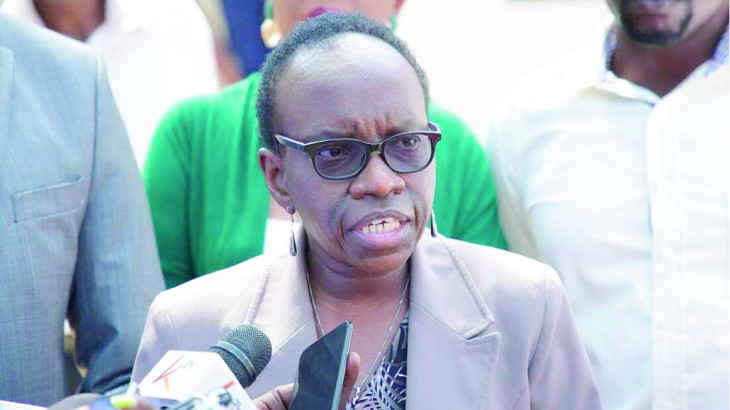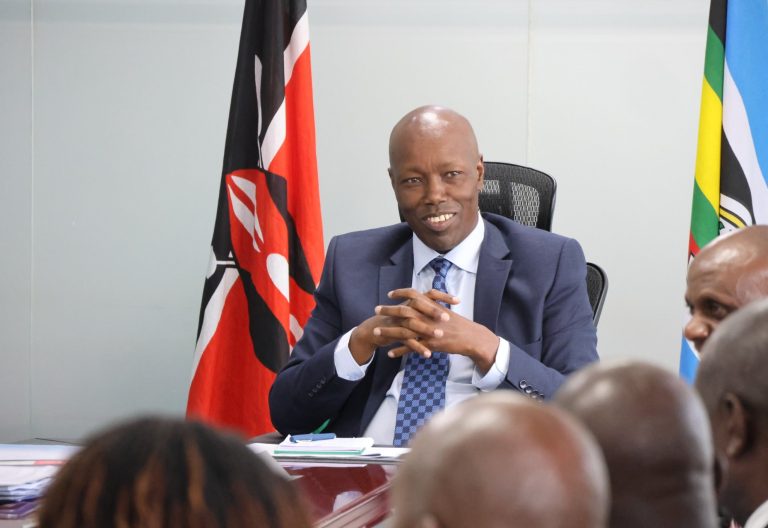Public varsities need Sh56b to remain open: New report

Kenya’s public universities are facing serious financial challenges with a new report revealing that they are indebted to the tune of Sh56 billion and have insufficient funds to run their operations.
The internal report prepared by the Ministry of Education has raised the red flag over the future of Kenya’s public universities which are struggling to justify their existence amid high costs of remaining open.
University of Nairobi (UoN), Kenyatta University (KU), Egerton University, Jomo Kenyatta University of Agriculture, Moi, Turkana, Technical University of Kenya (TUK), Karatina and Multi-Media universities are among the institutions of higher learning in dire financial trouble and risk closure unless the government pumps in more money to keep them in business.
Kisii University, for instance, has found itself in a quagmire after a court not only froze its bank accounts but also ordered it to pay the 204 staff who were sacked in 2020 Sh624 million. The court order just stopped short of paralysing the institution financially.
Garissa University, where 148 students were killed in a terrorist attack in 2015, is also facing a serious financial crunch compounded by lack of enough students. Potential candidates opt out of joining the university due to insecurity fears.
In the last intake, out of the 300 students allocated to Garisssa University by the Kenya Universities and Colleges Central Placement Service (KUCCPS), only 100 reported. The other 200 declined the offer, thus denying the university a crucial source of revenue. Universities received funding from the government based on the number of students and the courses they are undertaking. The situation at Garissa has been compounded further by local politicians who have been piling pressure on its management to employ their relatives.
Dr Charles Mukhwaya, Secretary-General of the Kenya Universities Staff Union (KUSU), while describing the situation in universities as dire, said the government was to blame because it had failed to fund them adequately.
“The government is supposed to fund 80 per cent of each student, but unfortunately it only gives 46 per cent of the money, leaving a deficit of 34 per cent,” Dr Mukhwaya told the People Daily in a telephone interview. “All these universities you see around are almost being reduced to monuments.”
Public universities that are sinking due to underfunding, embezzlement and failure to generate their own revenues had accumulated debts amounting to Sh56 billion as of June.
Many of them are also struggling to meet their obligations in form of pension funds remittances, paying statutory deductions, suppliers and contractors, and remitting staff loan deductions to lenders.
That means they are technically in financial ICU and are in dire need of injection of billions of shillings for resuscitation. This is possibly why Ezekiel Machogu, the new Cabinet Secretary for Education, said the government would allocate Sh50 billion to universities after initially saying that they would not be considered for allocations and should, therefore, find ways to raise their own revenues.
Technically insolvent
The dire situation has seen the Auditor-General to describe the affected public universities as “technically insolvent”. However, their plight has already been brought to Machogu’s attention.
“Low funding levels to universities have resulted in accumulation of pending bills equivalent to Sh56.1 billion which comprises statutory deductions, capital development expenditure, debts on quality assurance (CUE), placement by Kenya Universities and Colleges Placement Services (KUCCPs), wages and salaries arising from CBSs (collective bargaining agreements),” a report prepared for the CS says in part.
Some of the remedies the report recommends include the government assisting the universities clear Sh20 billion owed to the Kenya Revenue Authority (KRA) and a one-off financial support of Sh36.25 billion to pay pending bills. Universities have also been challenged to lobby the National Treasury to increase its annual budgetary allocation to 80 per cent per student and review tuition fees from Sh16,000 to Sh48,000 annually.
The last time public universities proposed to raise fees, they had to backtrack after student riots, making the last option less attractive to university managers. A new political administration would also be keen to avoid student riots in its early days of running government.
Still, they have to way ways to pay off pending bills that People Daily established comprise Sh18.5 billion in pension arrears, Sh13.7 billion owed to KRA in form of Pay as You Earn (PAYE) deductions, Sh10 billion which is a composite of various debt listed as “others”, Sh4.8 billion owed to suppliers, Sh4.5 billion for part-time lecturers, Sh4.1 billion in form of cooperative and sacco contributions and Sh1.3 billion in unremitted sacco and cooperative loan deductions.
Further, the universities owe contractors Sh1.4 billion, while the National Social Security Fund (NSSF) is demanding Sh139 million. Only the National Hospital Insurance Fund (NHIF) is demanding Sh2 million.
For instance, Egerton University had pending bills amounting to Sh9.17 billion as of June, with management citing low funding as well as closure during the Covid-19 pandemic period, which lasted close to two years. The financial distress was made worse by workers’ strikes, which the university has blamed for heavy loses.
In the current financial year, the government capped Egerton’s annual budget at Sh3.7 billion against a requirement of Sh5 billion, leading to a deficit of Sh1.3 billion.
Now, the management says, besides a bail-out to pay off the debt, the government should spend another Sh1.6 billion for staff rationalisation as part of right-sizing, and another Sh935 million for 3,822 students at the university whose capitation was not remitted in the 2018/2019 year.
Capitation should also be increased to improve the varsity’s financial position.










